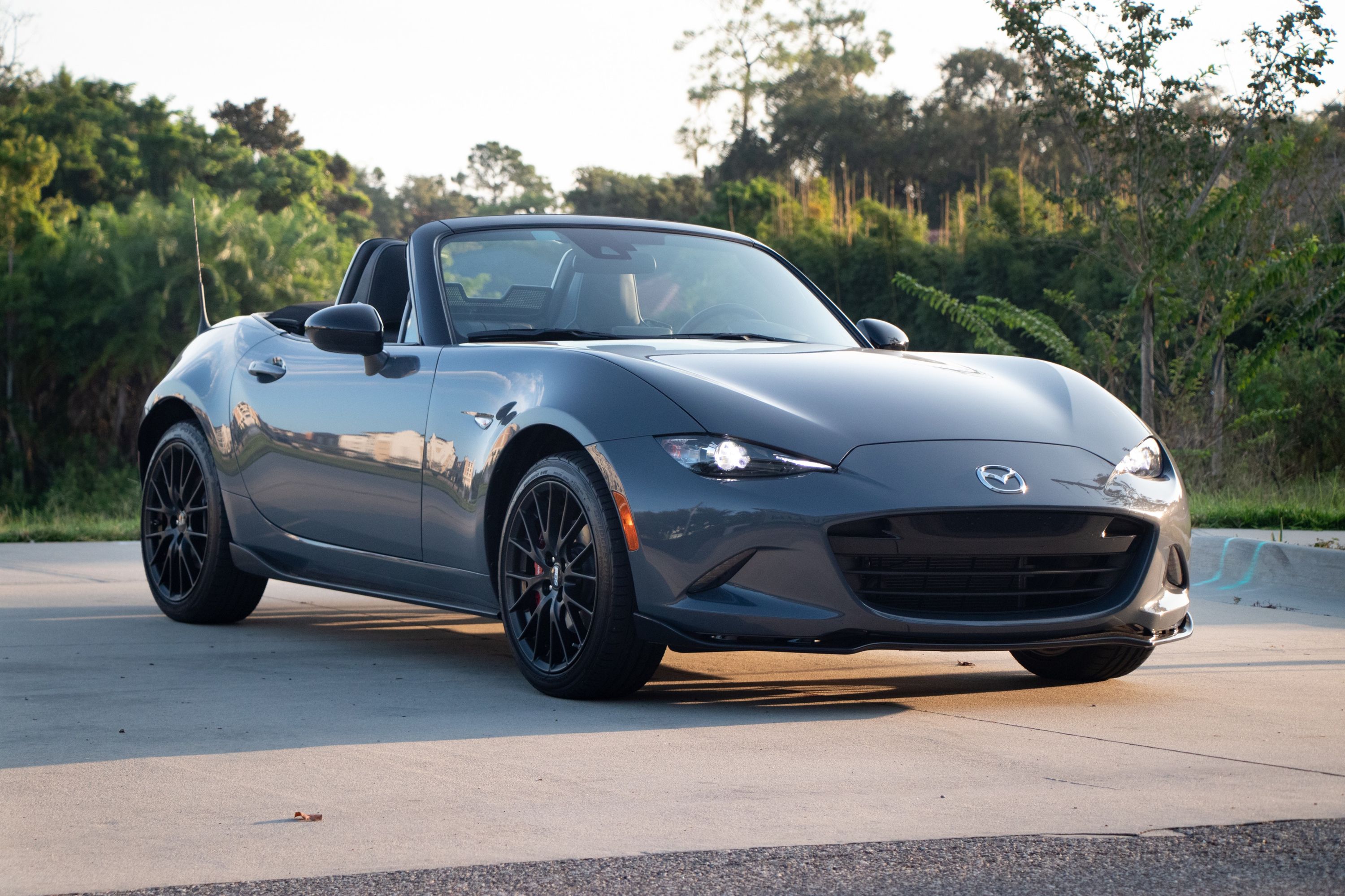
The current ND-generation Mazda MX-5 Miata debuted in 2014 before hitting the streets towards the end of 2015. That means it's been on the market for a solid six years, and in modern car terms, that's an absolute eon. With continual technology advancements and computer-aided car design speeding up the process of new model development, the span over which a generation is sold is becoming shorter and shorter, aided by modular platforms that keep evolving rather than requiring complete reengineering.
With that in mind, the engineers over at Mazda's HQ in Japan are likely already heavily focused on the next generation of the iconic Mazda MX-5 Miata. With a number of CarBuzz staff being past or current Miata owners, we've taken a look at what the future (NG generation) of the MX-5 will look like.
A Continuation Platform
Mazda is currently working on a new FR architecture that will underpin future rear-wheel-drive models like the next-gen Mazda 6 and Mazda CX-5. But while a modular platform of this type may seem like an ideal fit for the MX-5, these vehicles will all be compatible with hybridization, and crucially, all-wheel-drive, which adds weight and complexity to the platform.
This goes against the Miata ethos, which is why we're more inclined to believe that the NG (fifth-gen) MX-5 will ride on an advancement of the current H-frame Skyactiv chassis. In this way, the NG will be to the ND as the NB was to the NA - an advancement and a refinement more than a completely revised model. In doing this, Mazda will be able to retain current developments and reduce the development costs. And, considering the ND is the lightest and smallest since the original, the NG will still be suitably compact and lightweight.
Forget About Turbocharging
While Mazda has toyed with turbos in the MX-5 on two occasions before, don't expect the fifth-gen model to do the same. The Miata essence has always been one of simplicity, and a lightweight body doesn't require turbocharged torque to get it moving at great pace. But ever-tightening restrictions mean that Mazda surely can't continue using the current naturally-aspirated Skyactiv-G gasoline engines forever. Fortunately, Mazda has a solution.
Dubbed the "holy grail of combustion engines" by the media, Skyactiv-X engines are gasoline-fed motors that combine the benefits of both gas and diesel to create more torque but with greater efficiency. The current ND's engine is a 2.0-liter four-pot developing 181 horsepower and 151 lb-ft of torque. The 2.0-liter Skyactiv-X motor utilizes a supercharger in conjunction with spark-controlled compression ignition and a 24-volt supplementary electric motor to generate 188 hp and 177 lb-ft.
At present, this is only used in transverse applications, but Mazda has changed how its engines are mounted before, so we see no reason why the brand couldn't do the same here, and give it a bump in power while they're at it. In the press spiel, Mazda continually references the spirit of Jinba-ittai for these engines, but historically, this phrase has been used primarily for the MX-5 driving nature of 'horse and rider in unison'. The connection there may seem vague, but we doubt the brand would mix the two unless something was definitely going to happen.
A manual will remain the default choice of transmission with an automatic option available. We can only hope that Mazda makes use of a sharper automatic than the current 6-speed, which is a slow, dimwitted thing that takes away from the driving experience rather than contributing towards it.
Evolutionary Design
In much the same way as the platform underpinning the NG generation MX-5 will be an evolution of what we currently know, so too will the design language. Mazda has already started rolling out the second iteration of its Kodo: Soul of Motion design language with models like the new Mazda 3 and the MX-30 and we've seen a few concepts previewing the new styling. Our digital artists got to work seeing how the MX-5 might evolve using the Mazda Vision Coupe - a concept Mazda has earmarked as its blueprint for the "new elegance" design - resulting in the image you see at the top of this article. Alternatively, it might adopt styling cues from the Mazda Kai Concept pictured below.
We suspect the interior from the Kai will make its way into the MX-5. What that means is a familiar wing-design set of instruments ahead of the driver, while the rest of the dash will arc out and house an inboard infotainment screen and minimalistic climate controls. This interior concept is also labeled by Mazda as one that "hones the Jinba-ittai connection between car and driver," which again alludes to it being an inclusion in the next-gen model.
When Will The New Mazda MX-5 Miata Arrive?
The first-gen Miata was in production for 8 years, the second for a further 7, and the third for 10, although it went through 2 major updates in that time, and with Mazda's separation from Ford, a new model wasn't rushed through. The current ND model has been in production since 2015, so we expect it'll carry through until the end of the 2022 MY, maybe another year thereafter. Either way, we expect Mazda to start teasing us towards the end of 2022, and by midway through 2023, we'll have another member of the MX-5 family on the market. A soft-top roadster will likely be the first variant, but we wouldn't be surprised to see Mazda repeat the RF hardtop experiment and bring in a second body style at a later date.
